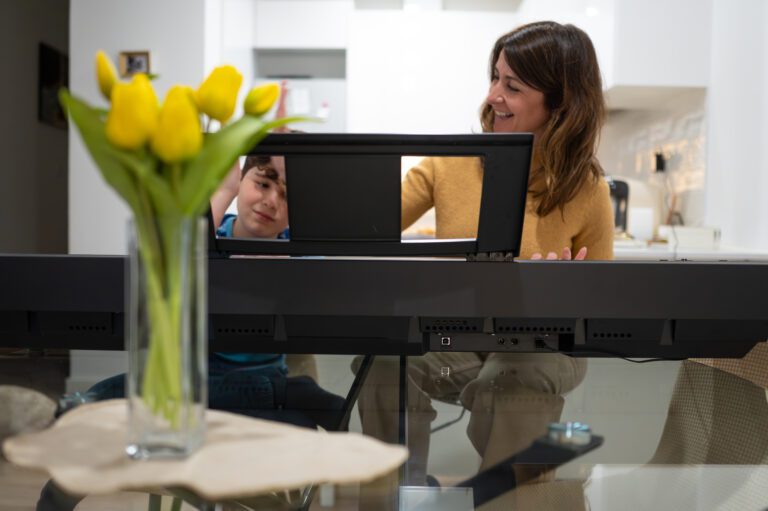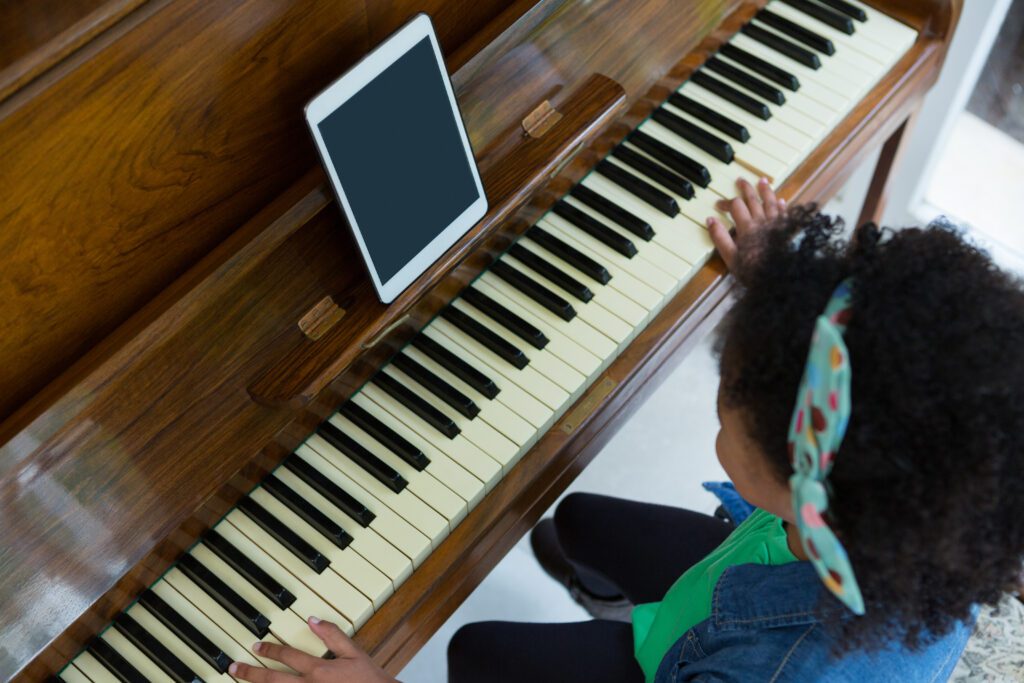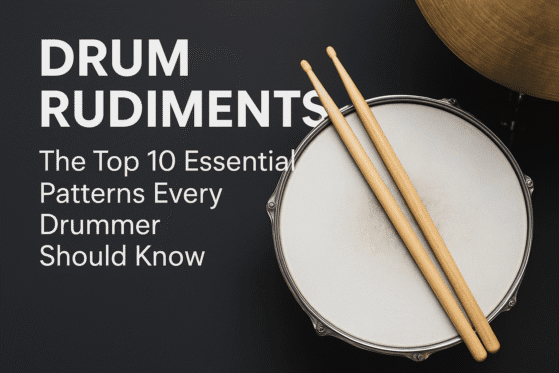Common Piano Mistakes and How to Fix Them
Struggling with piano playing is common, but understanding the typical mistakes can help you improve your technique, accuracy, and musicality. Common piano mistake include relying too much on muscle memory rather than sight-reading, pressing the damper pedal continuously, or playing without a clear structure in practice. To fix these, focus on daily sight-reading to improve fluency, use the pedal sparingly for clearer sound, and develop a structured practice routine with clear goals. Breaking down practice time into warm-ups, technical exercises, and repertoire will give you a more focused approach to improvement. By recognizing and correcting these mistakes, you can build a stronger foundation and enhance your overall piano playing.
1. Introduction: The Journey to Better Piano Playing
Every pianist makes mistakes, whether they’re beginners or advanced players. The key to improvement is identifying and correcting these mistakes before they become bad habits.
In this guide, we’ll explore the most common piano mistakes and provide practical solutions to help you refine your technique and play with confidence.
2. Poor Hand Position and Posture

The Mistake:
Many pianists play with collapsed fingers, stiff wrists, or hunched shoulders. This leads to tension, discomfort, and limited finger movement.
How to Fix It:
✅ Sit with a straight back and relaxed shoulders.
✅ Keep your wrists slightly elevated, not resting on the piano.
✅ Curve your fingers as if holding a small ball.
✅ Keep your elbows slightly away from your body for free movement.
A good posture prevents injury and allows better finger control.
3. Incorrect Finger Placement
The Mistake:
Some students play with random fingers, making transitions difficult.
How to Fix It
✅ Follow proper fingering indicated in sheet music.
✅ Use consistent fingerings for scales and arpeggios.
✅ Train each finger with exercises like Hanon and Czerny studies.
Good fingering improves speed and accuracy.
4. Not Using a Metronome

The Mistake:
Many pianists rush or slow down while playing.
How to Fix It:
✅ Practice with a metronome to develop steady rhythm.
✅ Start slow, then gradually increase speed.
✅ Clap or tap rhythms before playing them.
A metronome helps you maintain consistent timing.
5. Ignoring Dynamics and Expression
The Mistake:
Playing all notes at the same volume makes music sound robotic.
How to Fix It:
✅ Follow dynamics (p, f, crescendos, etc.) in sheet music.
✅ Experiment with soft and loud playing.
✅ Use phrasing to make melodies expressive.
Music is about emotion, not just notes.
6. Playing Too Fast Without Accuracy

The Mistake:
Trying to play fast before mastering accuracy.
How to Fix It:
✅ Play slowly and correctly first.
✅ Speed up gradually while maintaining accuracy.
✅ Focus on clean execution, not just speed.
“Fast but messy” is not impressive—clean and precise playing is.
7. Skipping Sight-Reading Practice
The mistake many guitarists make is relying too much on memory instead of learning to read notes fluently. While memorization can be helpful in the short term, it can limit your ability to learn new music quickly and efficiently. To fix this, practice sight-reading daily with new pieces to build your fluency in reading music. Start by reading both hands together, even if it feels slow at first—this will help you develop coordination and ease with reading music as a whole. Focus on recognizing patterns and intervals rather than just individual notes; this will speed up your ability to read and play music more naturally. By incorporating sight-reading into your routine, you’ll boost your confidence and become more adaptable in learning new music quickly.
8. Neglecting Scales and Finger Exercises

The Mistake:
Skipping scales because they feel boring.
How to Fix It:
✅ Practice major and minor scales daily.
✅ Use different rhythms to make scales interesting.
✅ Play arpeggios and finger independence exercises.
Scales build technique, speed, and finger strength.
9. Overlooking Pedal Technique
The mistake many pianists make is pressing the damper pedal continuously, which creates a muddy sound and blurs the notes. To fix this, lift the pedal when changing chords to ensure each note is clear and distinct, avoiding unwanted overlap. For more subtle effects, use half-pedaling, which allows you to control the amount of sustain and resonance. Pay close attention to the sound you’re creating and listen carefully to manage how long the pedal holds each note. Remember, Common piano mistake the pedal should enhance your playing, not overpower it, so use it sparingly and with intention to maintain clarity and balance in your music.
10. Practicing Without a Plan

The Common Piano mistake many musicians make is playing random pieces without a clear structure, which can lead to slow progress and a lack of focus. To fix this, start by setting clear goals for each practice session, ensuring you’re working towards something specific. Divide your practice time into different sections—warm-ups, technical exercises, repertoire, and sight-reading—to create a balanced routine that targets all aspects of your playing. Additionally, track your progress with a practice journal, noting what you’ve worked on and any areas that need improvement. A structured approach to practice helps you stay organized and focused, leading to faster improvement and more effective learning over time.
11. How The Mystic Keys Can Help You Improve
At The Mystic Keys, we help students:
✔ Fix bad habits through expert guidance.
✔ Develop strong technique with structured lessons.
✔ Gain confidence in sight-reading and improvisation.
✔ Improve expression and dynamics for a musical performance.
Whether you’re a beginner or advanced pianist, our one-on-one online lessons will take your skills to the next level.
12. Start Your Piano Journey with The Mystic Keys
If you’re serious about improving your piano skills, The Mystic Keys offers personalized lessons to help you overcome challenges and play with confidence.
✅ Book your first lesson today!
Visit www.themystickeys.com and start mastering the piano with expert guidance.
Related Blogs
At The Mystic Keys, we believe that mastering the piano practice structure is a journey that combines passion, discipline, and the right guidance. Whether you’re a beginner or an advanced pianist, a structured practice routine is the cornerstone of progress.
At The Mystic Keys, we emphasize the importance of proper finger placement as the foundation for any pianist’s journey. Whether you’re just starting or refining your technique, mastering finger placement will not only improve your speed and precision but also prevent strain and fatigue.
A well-set piano greatly enhances the worship experience, making the environment more inviting and spiritually enriching. To achieve this, you must focus on both technical and practical aspects, ensuring the instrument seamlessly complements the service. Below is a step-by-step guide on how to effectively set a piano for worship.








